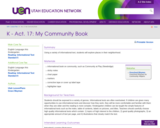
Using a variety of informational text, students will explore places in their neighborhood.
- Subject:
- Education
- Elementary Education
- Material Type:
- Lesson Plan
- Author:
- Grace Wayman
- Date Added:
- 05/15/2021

Using a variety of informational text, students will explore places in their neighborhood.
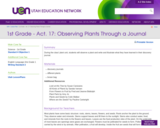
During the class' plant unit, students will observe a plant and write and illustrate what they have learned in their discovery journal.
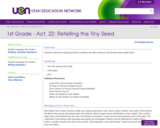
Using the interactive writing procedures, students will write sentences and illustrate ways seeds travel.
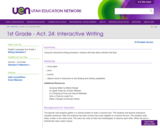
Using the interactive writing procedure, students will write about vehicles that float.
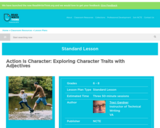
Students must "become" a character in a novel in order to describe themselves and other characters using powerful adjectives.
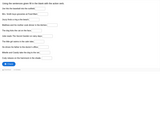
Students will choose the action verb in each sentence and type it in the blank.
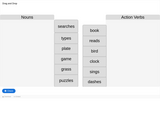
The student will classify the word list into nouns and verbs.
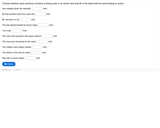
Students will choose whether each sentence contains a linking verb or an action verb and fill in the blank with linking or action.
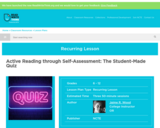
This recurring lesson encourages students to comprehend their reading through inquiry and collaboration. They choose important quotations from the text and work in groups to formulate "quiz" questions that their peers will answer.

Active and passive voice - a powerpoint explaining the difference.
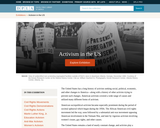
The United States has a long history of activists seeking social, political, economic, and other changes to Americaalong with a history of other activists trying to prevent such changes. American activism covered a wide range of causes and utilized many different forms of activism. American sociopolitical activism became especially prominent during the period of societal upheaval which began during the 1950s. The African American civil rights movement led the way, soon followed by a substantial anti-war movement opposing American involvement in the Vietnam War, and later by vigorous activism involving womens issues, gay rights, and other causes. The United States remains a land of nearly constant change, and activists play a significant role in the ongoing evolution of American democracy. It seems likely that Americans will remain enthusiastic activists in the future. This exhibition is part of the Digital Library of Georgia.
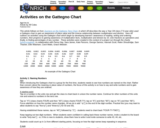
In this Nrich article, Alf outlines six activities using the Gattegno chart which begin by developing learners' awareness of reading, writing and ordering numbers, then progress to gaining awareness of multiplication facts, multiplication and division by 10, onto fractions as operations and, finally, to finding percentages of any number.

This resource is part of the San Francisco Unified School District Math Core Curriculum for Grade 2. It includes numerous activities to help students build fluency for addition within 20.
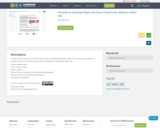
This resource is part of the San Francisco Unified School District Math Core Curriculum for Grade 2. It includes numerous activities to help students build fluency for addition within 100.
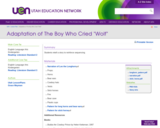
Students retell a story to reinforce sequencing.
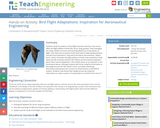
This activity first asks the students to study the patterns of bird flight and understand that four main forces affect the flight abilities of a bird. They will study the shape, feather structure, and resulting differences in the pattern of flight. They will then look at several articles that feature newly designed planes and the birds that they are modeled after. The final component of this activity is to watch the Nature documentary, "Raptor Force" which chronicles the flight patterns of birds, how researchers study these animals, and what interests our military and aeronautical engineers about these natural adaptations. This activity serves as an extension to the biomimetics lesson. Although students will not be using this information in the design process for their desert resort, it provides interesting information pertaining to the current use of biomimetics in the field of aviation. Students may extend their design process by using this information to create a means of transportation to and from the resort if they chose to.
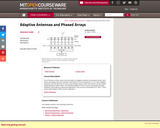
"The 16 lectures in this course cover the topics of adaptive antennas and phased arrays. Both theory and experiments are covered in the lectures. Part one (lectures 1 to 7) covers adaptive antennas. Part two (lectures 8 to 16) covers phased arrays. Parts one and two can be studied independently (in either order). The intended audience for this course is primarily practicing engineers and students in electrical engineering. This course is presented by Dr. Alan J. Fenn, senior staff member at MIT Lincoln Laboratory. Online Publication"

The true tale of the Recycled Orchestra of Paraguay, an orchestra made up of children playing instruments built from recycled trash. The resources includes a lesson plan/book card, a design challenge, and copy of a design thinking journal that provide guidance on using the book to inspire students' curiosity for design thinking. Maker Challenge: Students will create their own musical instruments with recyclable materials.
A document is included in the resources folder that lists the complete standards-alignment for this book activity.
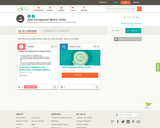
This short video and interactive assessment activity is designed to teach fourth graders about multi-step addition of weights with compound units (metric units) - word problems.
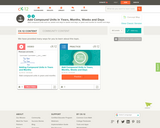
This short video and interactive assessment activity is designed to teach fourth graders about adding compound units in years and months.